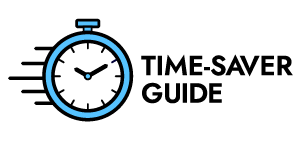Time-Saver Guide to Water Purification
Posted by Andy Neil on Feb 24, 2025

Why Water Purification Matters
Carrying large amounts of water is impractical and adds unnecessary weight to your pack. Instead, purifying water from natural sources ensures safe drinking water without excessive burden. Contaminated water can cause serious illnesses, making proper purification essential.
Common Water Contaminants
Even in the UK, seemingly clean water can harbour harmful pathogens and pollutants:
- Protozoa (e.g., Giardia, Cryptosporidium) – Resistant to some chemical treatments but removed via filtration, UV light, or boiling.
- Bacteria (e.g., E. coli, Salmonella) – Common in contaminated water, removed by filtration, boiling, and UV treatment.
- Viruses (e.g., Hepatitis A, Norovirus) – Rare in the UK but possible in contaminated water; best eliminated through chemical treatment, boiling, or UV light.
- Multicellular Parasites (e.g., Hookworm) – Easily removed through filtering or boiling.
- Chemical Contaminants – Runoff from farms or industrial areas can introduce heavy metals and pollutants.
Choosing a Water Source
Selecting the best water source minimises contamination risks:
- Opt for fast-flowing water (streams, rivers) over stagnant pools.
- Collect water upstream of campsites, trails, or livestock areas.
- Avoid sources near agricultural or industrial areas.
Water Purification Methods
1. Boiling
- Effectiveness: Kills bacteria, protozoa, viruses, and parasites.
- Method: Boil water for at least 1 minute (3 minutes at high altitudes).
- Drawbacks: Time-consuming, does not remove chemicals or sediments.
2. Filtration
- Effectiveness: Removes bacteria, protozoa, and parasites (but not most viruses).
Types:
- Bottle/Squeeze Filtration – Compact, lightweight, and ideal for solo hikers.
- Pump Filtration – Requires manual operation.
- Gravity Filtration – Great for groups, requires minimal effort.
- Considerations: Look for filters rated at 0.1 microns or smaller.
Why Bottle/Squeeze Filters Are Popular
- Lightweight and portable – Ideal for fast-moving hikers.
- Immediate use – No waiting time like chemical treatments.
- Low maintenance – Regular backflushing prevents clogging.
- Effectiveness: Kills most bacteria, protozoa, and viruses (some don’t eliminate Cryptosporidium).
- Method: Add chlorine dioxide or iodine tablets/drops; wait 30 minutes to 4 hours.
- Drawbacks: Alters water tastes and is less effective in cloudy water.
- Effectiveness: Destroys bacteria, viruses, and protozoa.
- Method: UV light is used to neutralise pathogens.
- Drawbacks: Clearwater and battery power are required.
Emergency Water Treatment
- Let water settle and filter through a cloth to remove debris.
- In survival situations, drinking untreated water may be necessary but carries health risks.
Final Tips
- Always carry a backup purification method.
- Test your equipment before heading out.
- Consider using a combination of methods (e.g., filtration + chemical treatment for extra protection).
For a more detailed breakdown, visit our Ultimate Guide to Water Treatment and Purification, or use our filters to find your Top Picks.
 |
||
 |
||
| Andy Neil |
||
|
Andy has been a keen long-distance hiker and wild camping enthusiast since he completed the Cleveland Way in 2015. Since then, he has walked thousands of trail miles all over the UK and is an active member of the Wild Camping UK community, being an admin of the largest wild camping community on Facebook. He strongly advocates for responsible wild camping and believes it is important to leave no trace when camping in the wilderness. He joined the UOG team in 2021 and works as a website developer and content creator. |
||
